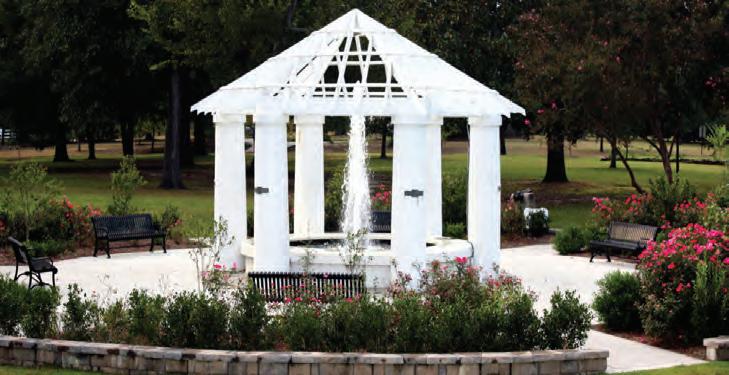
3 minute read
It takes partnerships to raise a Colonial V illage
By MARTIN L. CAHN
Apartnership between the long-established Historic Camden Revolutionary War site near downtown Camden and the neighboring, but much newer Revolutionary War Visitor Center will give a better sense of how life was experienced in the Colonial-era village of Camden, S.C.
Advertisement
The new effort, which has already begun, will include a number of upgrades to the Historic Camden site, run by the Historic Camden Foundation (HCF), including the addition of what will be known as the Sheheen Center at what would have been the settlements’ original intersection of Market and Meeting streets. Wateree Street, the boundary between the historic site and the Visitor Center, is already in the process of being reimagined. There will be programmatic changes at Historic Camden as well, to further intertwine the broader story of Camden and Kershaw County’s place during the Revolutionary War with the more personal story of life in Camden at the time.
Historic Camden Revolutionary War Site Executive Director Cary Briggs, and Revolutionary War Visitor Center Director Rickie Good. The two are working together in a joint effort to help tell Camden’s story as it was before, during and after the Revolutionary War.
The partnership includes not only the HCF and the city of Camden, which operates the Revolutionary War Visitor Center, but Kershaw County as well. The HCF owns the Battle of Camden site, 8 miles north of town on both sides of Flat Rock Road. The county recently agreed to enter into a recreation lease agreement with the HCF so that the county could assist in funding upgrades including trails, kiosks and other signage, facilities and more.
Former SCPRT Parks Director Phil Gaines, who is currently a professor at Clemson University teaching the practice of parks, recreation and tourism management, is consulting with HCF. He called the work at HCF, - under the director of Cary Briggs, and the Revolutionary War Visitor Center, under the director of Rickie Good - and the Battle of Camden site “bookends” in terms of telling Camden’s story before, during and after the Revolutionary War.
Within the “bookends” is the Battle of Hobkirk’s Hill site in the vicinity of what is now Kirkwood Common, as well as cemeteries, examples of period architecture, and other points of interest, he said.
While he is careful to point out that Historic Camden and the Visitor Center aren’t merging operationally, visitors will enjoy them as one campus to understand the Colonial period in Camden and Kershaw County.
“You’ll start at the RevWar Center,” as Gaines calls it, where exhibits tell the overarching story, “and then walk over to Historic Camden where to visitors will see period buildings, and enjoy hands-on activities and living history demonstrations.”
The work involving Meeting and Wateree streets is an effort, Gaines said, to recreate the original town’s grid -- what the original settlement looked like. In fact, Gaines said the internal roads on the Historic Camden campus will likely be “straightened” to appear more like the original straight-line grid designed by founding father Joseph Kershaw.
One expectation is that visitors to the KershawCornwallis House on the upper part of Historic Camden will be able to look through faux binoculars -- like the real ones atop the Empire State Building -to look down on the “village” of Camden, seeing where houses, stores and other buildings once stood.

Gaines said the proposed Sheheen Center, named for the Camden family that has produced a number of elected and other civil servants, will be new, but appear like it belongs there, fashioned after buildings of the period. He noted that there is still some negotiation about the proposed building, so he could not speak too much on what to expect.
“The idea is that so when visitors leave, they will have a better idea of what the town looked like, and why Joseph Kershaw put his house where he did, and the significance of Camden before and after the Revolutionary War -- the personalities, the people, the houses,” Gaines said. “Every community all over the state says their battle or skirmish was the turning point in the war, but where Camden stands out is that we were the starting point, with what happened at the Battle of Camden.”
Gaines noted that in addition to telling Camden and Kershaw County’s story in the American Revolution, the Historic Camden/Rev War Center campus and the Battle of Camden site are also tourism products serving as economic drivers.
Gaines emphasized most, however, the collaborative effort of the ongoing project, from the city and the Visitor Center, to the county and Historic Camden, as well as organizations such as the American Battlefield Trust, S.C. Battleground Preservation Trust, Palmetto Conservation Foundation, and Katawba Valley Land Trust.
“It would not be possible for just one entity to do all this, but they all have really answered the call,” Gaines said.











